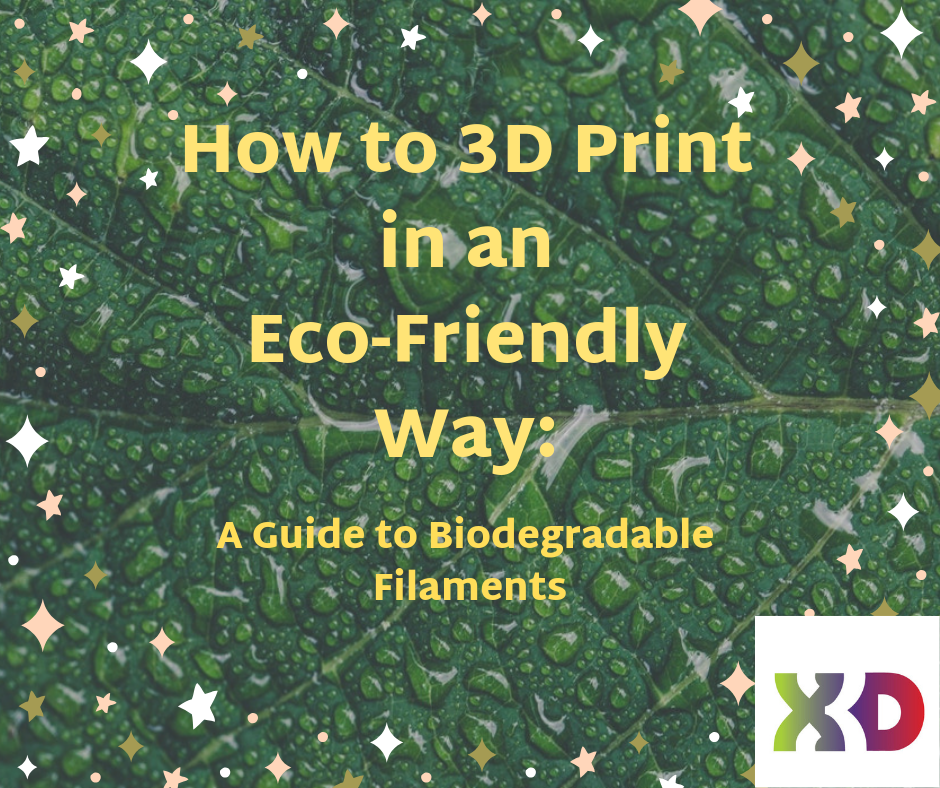With people’s growing environmental consciousness, there has been a move to make 3D printing a much more sustainable and eco-friendly technology. While 3D printing technology already reduces carbon and waste footprint, it can still be further reduced by doing these measures:
Use water-soluble supports or none at all
We have previously talked about the benefits of support structures and the hassles of removing them. Support removal can make or break a 3D print. Fortunately, there are dissolvable support materials such as PVA and HIPS that makes removal easier while being environmentally friendly.
Another thing, not all designs require supports. There have been many advancements in 3D printers nowadays that it is now possible to avoid the use of support materials. You can change the printing orientation of the model or part or ensure that features can be self-supported.
Create something out of leftover 3D printer filament
Leftover 3D printer filament usually ends up as waste. To avoid adding to your waste footprint, consider creating a multi-coloured model or part with all your leftover materials. All you have to do is feed them into the printer. Not only are you helping the environment, but you also get a cool 3D print as well.
Use an enclosure to contain the noxious fumes during printing
There are 3D printing filaments that emit harmful and offensive odours during printing, such as ABS. In this case, you can build an enclosure to prevent the noxious fumes from getting out. You can search online for tutorials on how to create DIY 3D printer enclosures. These enclosures not just trap foul odours, but also improve print quality, therefore hitting two birds with one stone.
Choose biodegradable 3D printing filaments
Biodegradable 3D printing filaments are not just for decorative prints and prototypes. While PLA lacks mechanical strength, its printability and variety of colours more than make up for its flimsiness. There are also PETG blends that are biodegradable if you’re looking for filaments to create mechanical parts, 3D printer components and other higher strength products.
You can also use the dissolvable support materials to create prints. HIPS is the lighter and more dimensionally stable counterpart of ABS. Meanwhile, PVA can be used as a substitute for PLA.
Best Biodegradable 3D Printer Filaments on the Market
PLA
PLA is the most popular biodegradable 3D printing filament due to its versatility and printability. PLA is perfect for printing containers, non-functional prototypes, toys, models, and figures,
X3D Pro PLA

The X3D Pro PLA comes in a wide variety of colours. The colour never fades; it remains just as vibrant after printing as it is on the roll. It also requires less energy to print, therefore helping you save on electricity bills.
X3D Pro Recycled PLA Filament

The X3D Pro Recycled PLA has the same performance as our original one but more eco-friendly. It is made out of residual extrusion waste streams which are re-compounded and homogenized into a high-end and easy to print upcycled PLA filament with significant less environmental impact.
It is currently on sale this EOFY. Get 25% off on our X3D Pro Recycled PLA range for just $45. Promo lasts until 14 June.
PET
You may be more familiar with PETG filaments, the industrial strength copolymer of PET. But you may be surprised to know that there is a filament made of pure PET. PET filament bests out PETG in terms of tensile strength, tensile modulus, and elongation streak at break.
ReForm rPET
FormFutura's ReForm rPET has been made made from post-industrial waste from a nearby located bottle manufacturer. It is a tough filament yet very easy to print with and comes in a wide range of colours.
Order biodegradable 3D printing filaments today!
Going green with 3D printing is easy especially with biodegradable 3D printing filaments. If you have questions about any of these filaments, you can contact us by email at x3d@x3d.com.au.

